I only recommend products I would use myself and all opinions expressed here are our own. This post contains affiliate links. If you use these links to buy something we may earn a commission at no cost to you.
I first had membrillo at my homestay my first year in Barcelona, served after dinner with slices of Manchego cheese and long conversations practicing Spanish. Quince’s sweet-tart floral flavor paired so well with the nutty cheese.
I took it for granted in Spain, where it’s cheap and easily found. In London, and now in the States, it’s a specialty item and much more expensive than I’m used to. So, when I saw some fresh quince at the store, I had to try making it myself.
This recipe is a little different from how dulce de membrillo is usually shaped and served. Typically, the quince is puréed and allowed to set in a mold so it can be sliced. I skip puréeing the stewed quince, transfer it into jars, and serve it more like preserves or marmalade.

What is Membrillo?
Dulce de membrillo, or quince paste, is made from stewing quince with sugar. It’s sweet, tart, fruity, and beautifully floral. The tough quince breaks down and softens after cooking, and the sugar tames the bitter edge of the raw fruit. Quince is high in pectin, which gels and turns it into a thick marmalade or sliceable block, perfect for a cheeseboard.
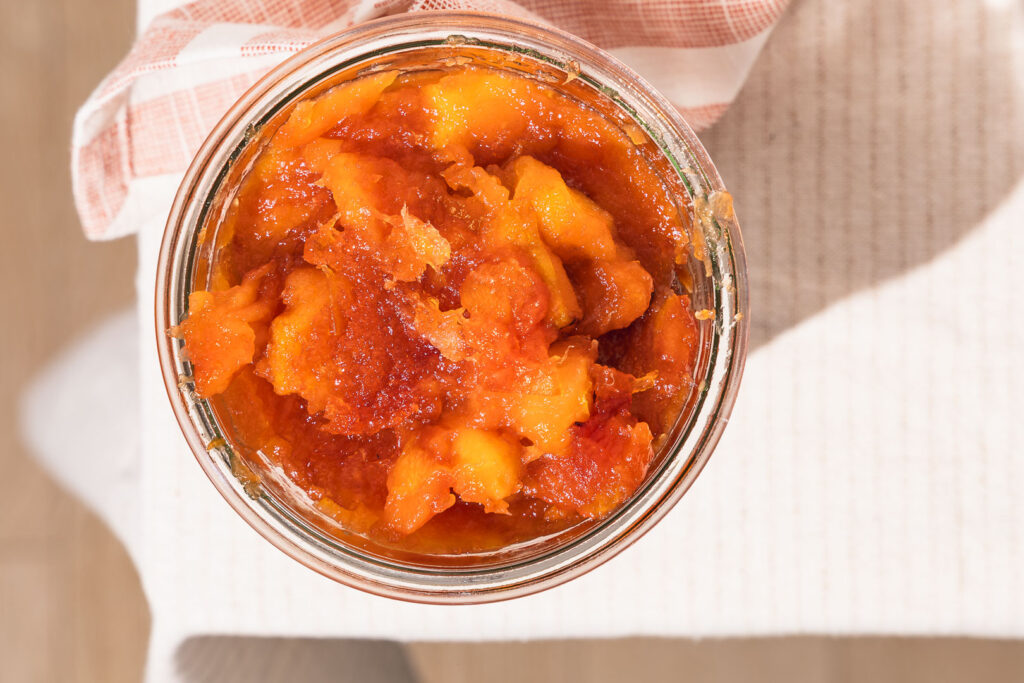
The History of Membrillo
My love for membrillo started in Cataluña, where it’s known as codonyat. It’s eaten not just in Spain, but across much of the Mediterranean. It’s also popular in Brazil and Latin America since it was brought there by the Portuguese and Spanish.
While we now use the term for many fruit spreads, the word marmalade comes from the Portuguese word marmelada, meaning quince preparation. But membrillo goes back even further than the Portuguese—the first written mention of quince paste appears in a Roman cookbook of Apicius from the 5th century AD, where it’s cooked with honey.
If we go even further back, quince was associated with the Greek goddess of love, Aphrodite. Considering quince’s presence in Greek mythology and the fruit’s origins near the Caspian Sea, it’s likely that quince paste dates back to ancient times in Mesopotamia.

What is Quince?
Quince looks like a large pear or apple, and as a member of the Rosaceae family, is related to both. The fruit likely originates in the areas surrounding the Caspian Sea and today, Turkey produces the most quince.
Quince is usually green or gold with straw-colored flesh. It’s not good to eat raw, and even when it’s ripe, the fruit is hard, fibrous, and bitter. But when it’s cooked, it softens and turns a beautiful sunset orange-pink with an irresistible floral aroma.
Tips for Making Membrillo
- You can leave the quinces unpeeled, or peel them. I leave them unpeeled because it’s fewer steps, the skin breaks down while stewing, and there are flavor compounds in the skin as well.
- Keep an eye on it and stir occasionally so it doesn’t catch and burn. It’s a relatively hands-off recipe, but don’t leave it unattended.
- Macerating the quince before cooking pulls juices out of the fruit and dissolves the sugar into a syrup. This prevents the dry sugar from catching and burning on the bottom of the pot before enough water is pulled from the fruit. It also begins to break down the fruit before cooking, which helps in this case because of how hard and fibrous quince is. Macerating fruit before cooking jam is a trick I learned from Jacquy Pfeiffer’s cookbook.
- I prefer to add the lemon juice towards the end of cooking, giving the membrillo a brighter flavor. Cooking lemon juice for a long time can have an unpleasant, acrid taste.
- I don’t bother pureeing my membrillo and serve it in a bowl or straight from the jar. I like the mix of textures, and it gives it a homemade look.
- You can double the recipe as long as you use a large saucepan. Then you can gift the extra jars or keep them in the freezer to enjoy outside of quince season.

How to Serve Membrillo
Membrillo is sweet but usually served with savory snacks, especially cheese. The fruity and floral flavor complements salty aged semi-hard and hard cheeses, typically Manchego in Spain. A sweet fruit spread may seem strange to pair with cheese, but I’ve seen (and enjoyed) cheeseboards with red pepper jelly, caramelized onions, fig jam, or apples and honey.
For some small bites during a party, I’d serve membrillo on a cheeseboard with Manchego cheese, marinated olives, jamón Serrano, fuet, and some crusty slices of sourdough or crackers. It’s also a simple and delicious cheese-course for dessert.
How to Store Membrillo
Store membrillo in an airtight container in the refrigerator for up to 3 months. For longer storage, you can keep it in the freezer for up to 1 year.
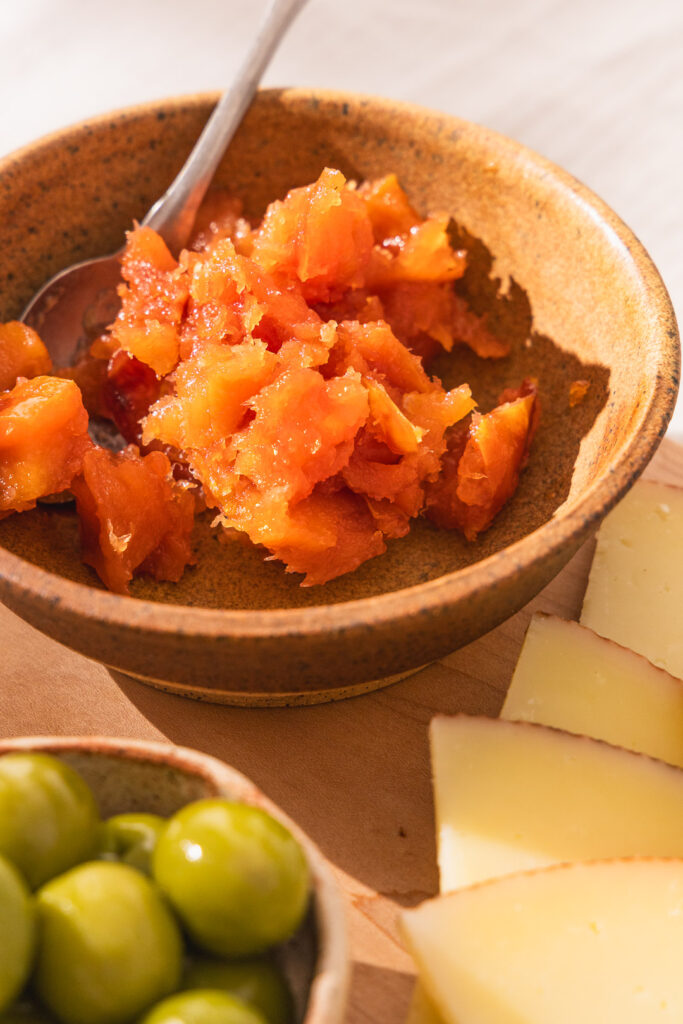
Dulce de Membrillo: Spanish Quince Paste
Adapted from Omar Allibhoy’s Tapas Revolution
Yield: 1/2 liter (2 cups)
Prep time: 1 hour 30 minutes
Cook time: 1 hour 40 minutes
Ingredients:
260g granulated sugar
80ml water
Juice from 1/2 lemon
1 1/4 cups granulated sugar
1/3 cup water
Juice from 1/2 lemon
1. Prepare the quince:
Core and cut the quince into 1-inch pieces. I usually leave the peel on. It may be a bit rustic, but it breaks down during the long cooking. You can peel it if you prefer. Quince oxidizes and browns very quickly, but don’t worry about it for this recipe, it will turn a beautiful orange during cooking.
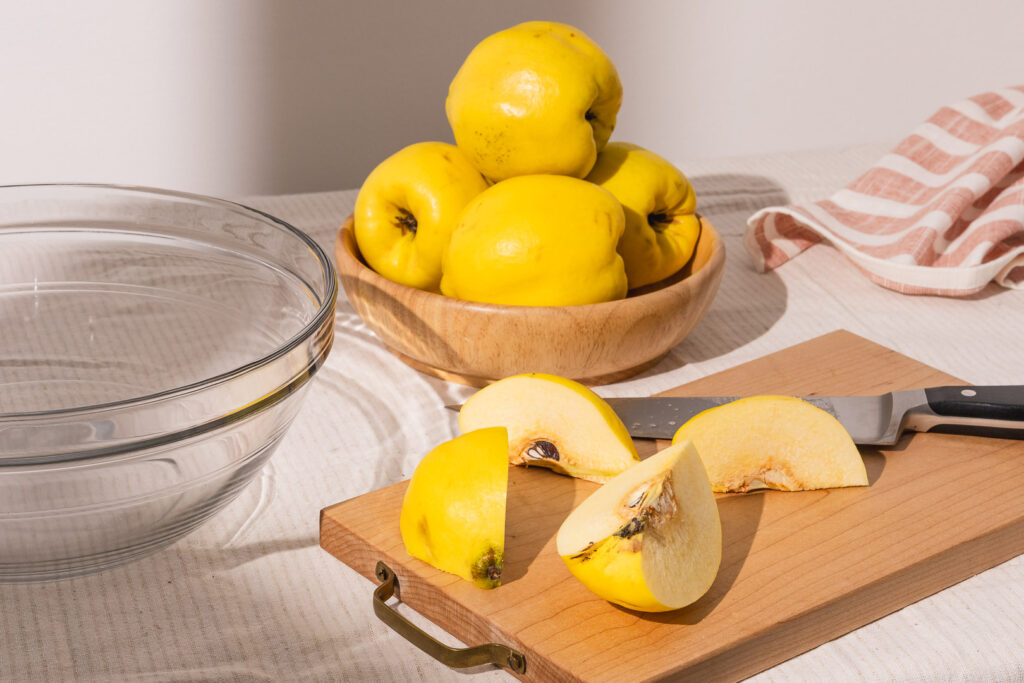

2. Macerate the quince:
Toss the quince pieces with the granulated sugar directly in a heavy-bottomed saucepan if it fits in your refrigerator, or otherwise a large mixing bowl. Cover the pan and set it in the fridge to macerate for 1 hour.
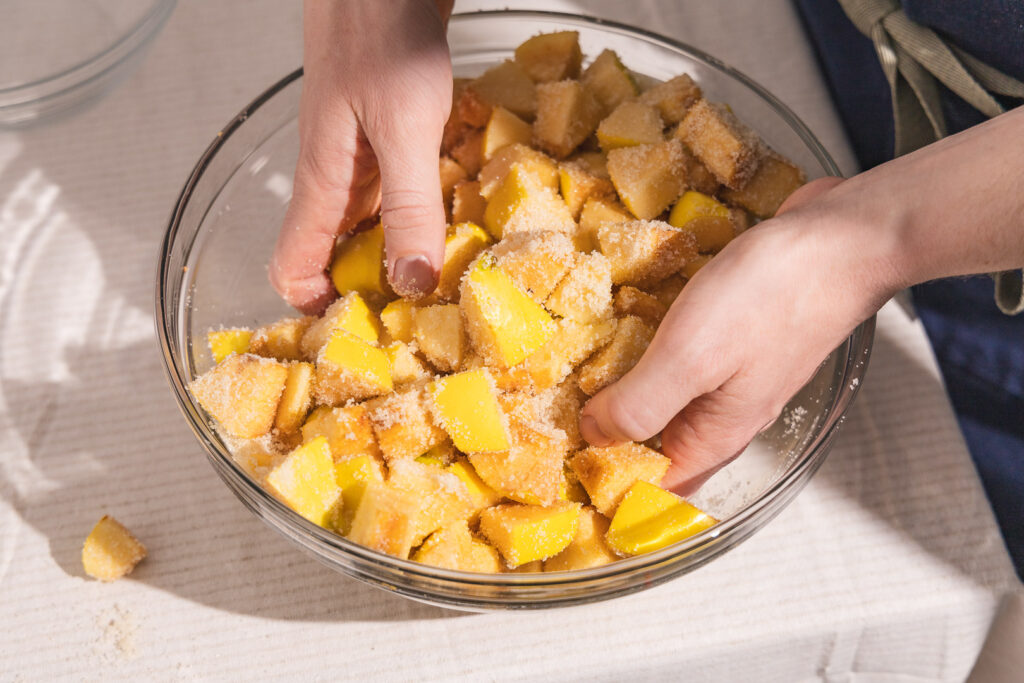

3. Bring to a boil:
If you used a mixing bowl, transfer the quince and any juices into a heavy-bottomed saucepan. Set the pan, uncovered, on medium-high heat and bring to a boil. Stir the quince occasionally with a wooden spoon so it doesn’t stick to the bottom of the pan.

4. Cook:
Once it comes to a boil, reduce the heat to low. Continue cooking, stirring occasionally, for 1 1/2 hours.
After about 30 minutes, the quince will begin to caramelize. By the end of cooking, the quince will have broken down into a paste with some small pieces. It should be very thick and a beautiful burnt orange color.
Stir in the water and lemon juice and continue cooking for another 10 minutes.

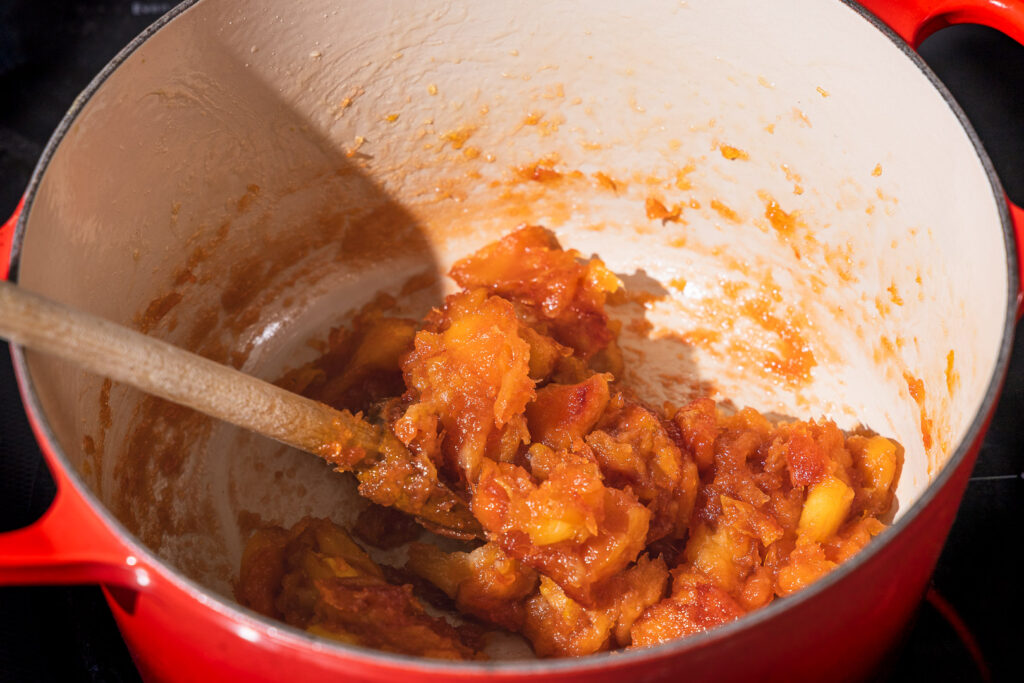
6. Transfer to a container:
Transfer the membrillo to a heatproof container or glass jars. I use half-liter Weck jars for my sourdough starter and always have a few empty ones available.

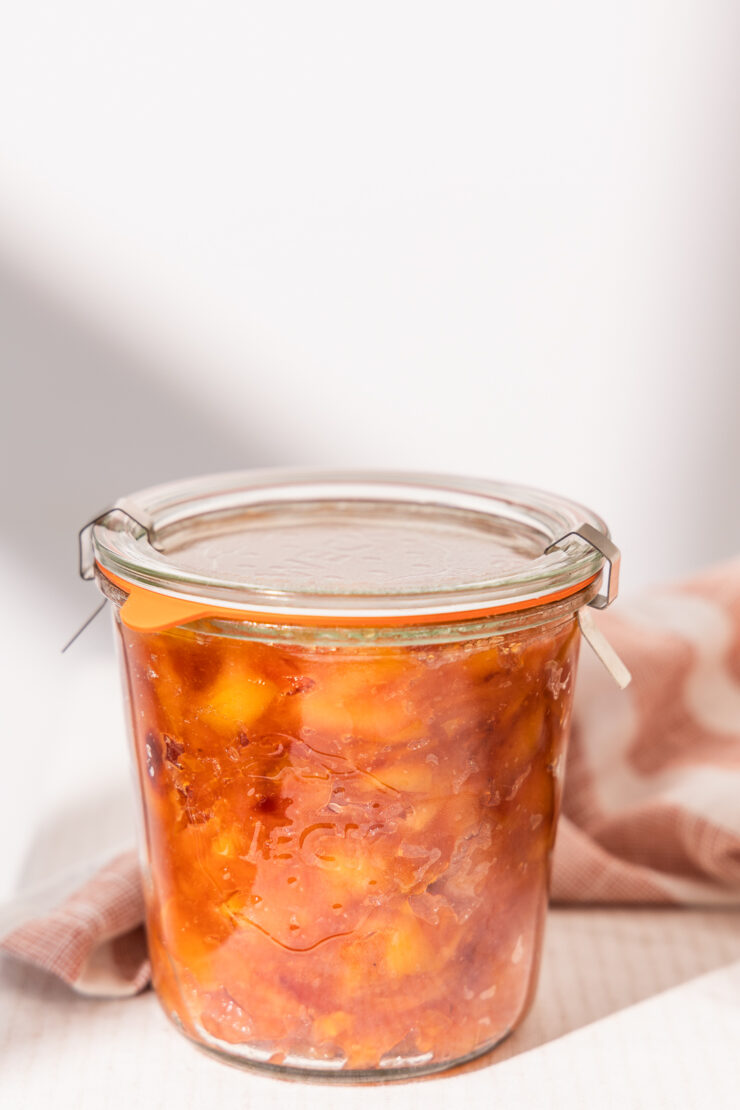
No Comments